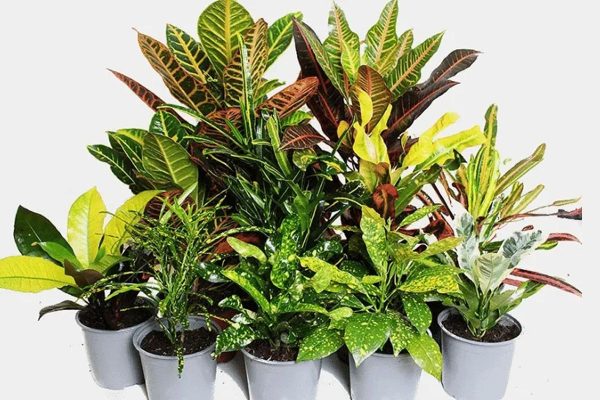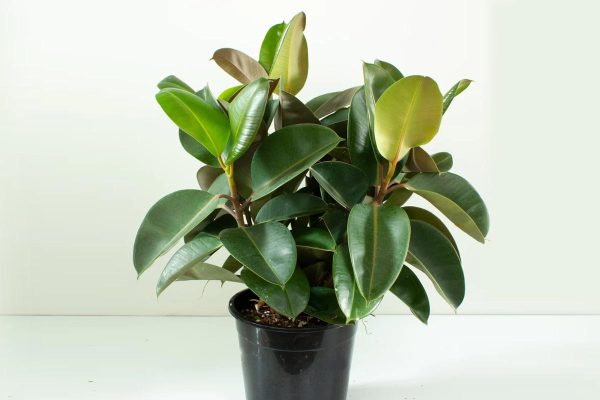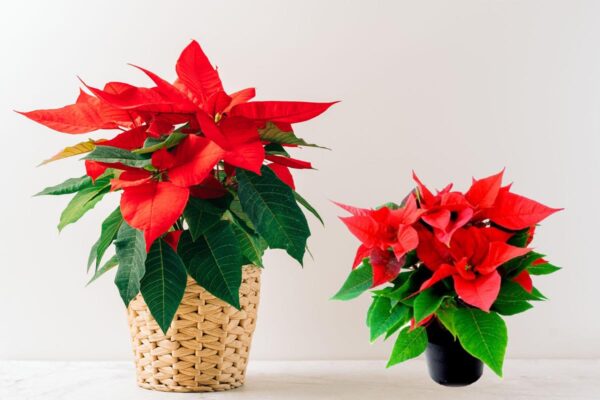Plants
Chinese Evergreen
Introduction / परिचय
The Chinese Evergreen (Aglaonema) is a popular indoor plant known for its lush foliage and low-maintenance characteristics. Native to Southeast Asia, this tropical perennial is valued for its ability to thrive in low-light conditions, making it an ideal choice for indoor environments with limited sunlight. With attractive, variegated leaves in shades of green, silver, and red, the Chinese Evergreen adds a touch of elegance to homes and offices. Renowned for its air-purifying qualities, it effectively removes toxins, enhancing indoor air quality. Easy to care for, the Chinese Evergreen is an excellent choice for novice and experienced plant enthusiasts.
| English Name: | Chinese Evergreen |
| Hindi Name: | चाइनीज एवरग्रीन |
| Scientific Name: | Aglaonema |
| Family: | Araceae |
| Kingdom: | Plantae |
| Light : | Low Light |
| Height: | 1 to 3 feet |
| Flower Color : | White |
| Foliage Color : | Gray Silver |
| Eason Features : |
Also Read This :Green Guardians: Exploring the Best Plants Used for Hedges
When to Plant Chinese Evergreen
Chinese Evergreen (Aglaonema) can be planted year-round indoors, as it thrives in controlled environments. However, if you plan to introduce it to an outdoor setting, it's best done in the spring or early summer when the temperatures are consistently mild. Planting during these seasons allows the Chinese Evergreen to establish its roots before facing harsh weather conditions. Ensure the soil is well-draining, and choose a location with indirect light for optimal growth. This versatile plant adapts well to various conditions, making it a resilient and attractive addition to indoor and outdoor spaces.
Also Read This :How to Growing Krishna Kamal, Lord Krishna’s Favorite Flower, at Home
Varieties / किस्मे
Chinese Evergreen (Aglaonema) has various cultivars with unique leaf patterns and colours. Here are some popular varieties:
Aglaonema 'Silver Queen':
Known for its striking silver-grey leaves and green margins. This variety is a classic choice and well-loved for its elegant appearance.
Aglaonema 'Red Siam':
This variety features green leaves with vibrant red or pink veins. The contrast between green and red/pink adds a pop of colour to indoor spaces.
Aglaonema Maria:
Maria is recognized for its dark green leaves adorned with silver patterns. The silver variegation gives it a sophisticated and decorative look.
Aglaonema 'Emerald Bay':
This variety showcases green and silver variegated leaves, creating a lush and tropical aesthetic. It's a popular choice for its attractive foliage.
Aglaonema 'White Calcite':
Characterized by its light green leaves with prominent white markings, 'White Calcite' adds a refreshing and bright element to any room.
Aglaonema 'Golden Bay':
Featuring golden-yellow variegation on green leaves, 'Golden Bay' adds warmth and brightness to indoor spaces. The vibrant colours make it a standout choice.
Aglaonema 'Cutlass':
'Cutlass' is known for its narrow, elongated leaves with a unique pattern of green and silver stripes. It brings a different texture compared to other varieties.
Aglaonema 'Harlequin':
This cultivar displays a mosaic-like pattern of light and dark green on its leaves, creating a visually exciting and dynamic appearance.
Aglaonema 'Creta':
'Creta' is appreciated for its pink and green foliage, adding a touch of softness and warmth. The pink hues are especially prominent in the younger leaves.
Aglaonema 'Sparkling Sarah':
With its deep green leaves and pinkish-red veins, 'Sparkling Sarah' adds a touch of drama and elegance to indoor spaces.
When selecting a Chinese Evergreen variety, consider the lighting conditions in your space and personal preferences for leaf colour and pattern. Each of these varieties contributes to the charm and diversity of the Aglaonema species.
Also Read This :Embracing the Beauty of Indoor Plants with Striking Red Leaves
Classification of Plants/ पौधों का वर्गीकरण
Chinese Evergreen plants, scientifically known as Aglaonema, belong to the Araceae family. This diverse genus encompasses numerous species and cultivars characterized by their lush, decorative foliage. The classification of Aglaonema involves various hybrids and varieties, each exhibiting distinct leaf shapes, colours, and patterns. These evergreen perennials are primarily native to tropical and subtropical regions of Southeast Asia. Within their taxonomy, different varieties like 'Silver Queen,' 'Red Siam,' and 'Maria' showcase the versatility of this species. As popular indoor plants, Chinese Evergreens are appreciated for their adaptability, air-purifying qualities, and aesthetic appeal, contributing to their widespread cultivation worldwide.
Also Read This :Growing Syngonium Plants at Home: A Simple Guide Using Cuttings and Seeds
History / इतिहास
The history of Chinese Evergreen plants (Aglaonema) dates back to their origins in Southeast Asia's tropical and subtropical regions. These evergreen perennials have been cultivated for centuries due to their ornamental foliage. Traditionally used in Chinese culture for decorative purposes, they gained global popularity as indoor plants in the 19th century. Aglaonema's resilience and adaptability contributed to their widespread cultivation. Over time, horticulturists developed various cultivars, such as 'Silver Queen' and 'Red Siam,' enhancing the plant's aesthetic diversity. Today, Chinese Evergreens are cherished for their beauty, air-purifying qualities, and suitability as indoor ornamentals.
Also Read This :Right Direction to Keep Tulsi Plant in Your Home
Uses and Benefits / उपयोग एवं फायदे
Chinese Evergreen plants (Aglaonema) serve both aesthetic and functional purposes. As popular indoor ornamentals, they enhance interior spaces with their attractive, variegated foliage in shades of green, silver, and red. Beyond their decorative appeal, Chinese Evergreens are recognized for their air-purifying qualities, helping to filter indoor pollutants. These resilient plants require minimal care, making them ideal for novice gardeners. Additionally, in traditional Chinese culture, they symbolize good luck and prosperity. Their adaptability to low-light conditions and various climates further underscores their versatility, making Chinese Evergreens a favourite choice for homes, offices, and public spaces worldwide.
Also Read This :Botanical Bounty: Must-Have Flowering Shrubs to Transform Your GardenHow to Grow Plant / कैसे उगाएं
Chinese Evergreen (Aglaonema) plants can be propagated through stem cuttings and, to a lesser extent, seeds. Here's a guide on how to grow Chinese Evergreen plants from cuttings and seeds:
Growing Chinese Evergreen from Cuttings
Materials:
- Healthy Chinese Evergreen plant
- Clean, sharp scissors or pruning shears
- Pot with well-draining soil
- Rooting hormone (optional)
Steps:
Select a Healthy Stem: Choose a healthy, non-flowering stem for cutting. Ensure it has at least a few inches of healthy growth.
Take the Cutting: Use clean, sharp scissors to cut a 4-6-inch section of the stem. Cut just below a leaf node.
Remove Lower Leaves: Remove the lower leaves from the cutting, leaving only a few leaves at the top.
Rooting Hormone (Optional): Dip the cut end in rooting hormone (if using) to encourage root development.
Plant the Cutting: Plant the cutting in a pot with well-draining soil, burying the cut end. Water the soil lightly.
Place in Indirect Light: Put the pot in a location with indirect light. Avoid direct sunlight.
Maintain Moisture: Keep the soil consistently moist but not soggy. Mist the cutting regularly.
Root Development: After a few weeks, the cutting should develop roots. You can gently tug it to check for resistance, indicating root growth.
Transplanting: Once the cutting has roots, transplant it into a larger pot with regular Chinese Evergreen care.
Also Read This :Exploring the Green Tapestry: All About Shrubs, Plants, and Their Types
How to Take Care/ देखभाल कैसे करे
Taking care of Chinese Evergreen plants (Aglaonema) involves providing the right conditions for their growth and addressing their needs. Here's a comprehensive guide on how to care for Chinese Evergreen plants:
Light:
- Place in low to moderate indirect light. Avoid direct sunlight, as it can scorch the leaves.
- They can tolerate low-light conditions but may grow more slowly.
Watering:
- Allow the top inch of the soil to dry out before watering. Ensure proper drainage to prevent waterlogging.
- Water thoroughly, but don't let the plant sit in standing water.
Soil:
- Use a well-draining potting mix with organic matter, such as peat moss.
Temperature:
- Maintain temperatures between 65-80°F (18-27°C). Protect from drafts and sudden temperature changes.
Humidity:
- Adaptable to average household humidity but prefers higher humidity. Mist the plant or use a humidity tray.
Fertilization:
- Feed with a balanced liquid fertilizer every 4-6 weeks during the growing season (spring and summer).
Pruning:
- Trim yellow or damaged leaves regularly to encourage new growth and maintain appearance.
- Prune with clean, sharp scissors or pruning shears.
Repotting:
- Repot every 1-2 years or when the plant outgrows its container.
- Choose a pot slightly larger than the current one and refresh the soil.
Propagation:
- Propagate through division during repotting or take stem cuttings.
- Root cuttings in water or soil.
Pests and Diseases:
- Inspect regularly for pests like spider mites or scale insects.
- Treat infestations promptly with insecticidal soap or neem oil.
- Ensure good air circulation to prevent fungal issues.
Caring for Different Varieties:
- Different varieties may have specific care requirements. Adjust light and watering based on the cultivar.
Placement:
- Position where it receives filtered light. Avoid drafty or icy areas.
Additional Tips:
- Clean the leaves occasionally to remove dust.
- Monitor the plant's response and adjust care accordingly.
- Keep the plant out of reach of pets and small children, as it's mildly toxic if ingested.
Following these care guidelines lets you enjoy healthy and vibrant Chinese Evergreen plants in your indoor spaces. Adjust the care routine based on the specific needs of your particular Aglaonema variety.
Also Read This :Blooming Brilliance : 5 Ingenious Ways to Use Banana Peels in Your Garden
Interesting Facts / रोचक तथ्य
Air Purifiers: Chinese Evergreen plants are known for their air-purifying abilities, helping to remove indoor pollutants.
Longevity: These plants are long-lived and can thrive for many years with proper care.
Cultural Significance: In Chinese culture, they symbolize good luck and prosperity, making them popular choices for homes and businesses.
Tropical Origins: Native to tropical and subtropical regions of Southeast Asia, they are adapted to warm and humid climates.
Varietal Diversity: Chinese Evergreen varieties come in a wide array of colors and patterns, including silver, red, green, and pink, making them highly decorative.
Low Light Tolerance: Their ability to thrive in low-light conditions makes them ideal for indoor environments with limited natural light.
Easy Care: Chinese Evergreens are considered low-maintenance, making them suitable for beginner gardeners.
NASA-Approved: Some varieties have been included in NASA's list of air-purifying plants for their ability to improve indoor air quality.
Feng Shui: Chinese Evergreens are often used in Feng Shui practices to bring positive energy and balance to a space.
Adaptability: They can adapt to a variety of indoor conditions, including different light levels and humidity levels, making them versatile houseplants.
Also Read This :Flowerless Plants: Ferns, Mushrooms, Mosses, Lichens, and Seaweeds




